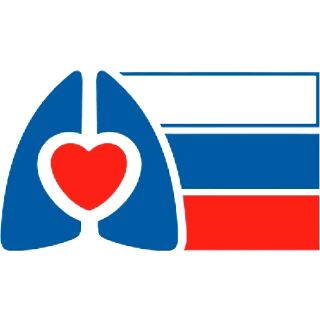Involvement of Aromatic Metabolites in the Pathogenesis of Septic Shock
Publication type: Journal Article
Publication date: 2017-11-21
scimago Q1
wos Q1
SJR: 0.909
CiteScore: 5.8
Impact factor: 2.9
ISSN: 10732322, 15400514
PubMed ID:
29189605
Critical Care and Intensive Care Medicine
Emergency Medicine
Abstract
We hypothesized that aromatic microbial metabolites (AMM), such as phenyllactic (PhLA), p-hydroxyphenylacetic (p-HPhAA), and p-hydroxyphenyllactic (p-HPhLA) acids, contribute to the pathogenesis of septic shock.Clinical and laboratory data of patients with community-acquired pneumonia were obtained on intensive care unit admission and the next day. Patients were divided into two groups based on septic shock presence or absence. The levels of AMM (PhLA, p-HPhAA, p-HPhLA, and their sum, ∑3AMM), catecholamine metabolites (3,4-dihydroxymandelic [DHMA], 3,4-dihydroxyphenylacetic [DOPAC], and homovanillic [HVA] acids), lactate, N-terminal pro-brain natriuretic peptide (NT-proBNP), inducible nitric oxide synthase (iNOS), and procalcitonin (PCT) were compared. Correlations between AMM and clinical and laboratory data were calculated.There were 20 patients in the septic shock group and 21 in the nonseptic shock group. On admission, the septic shock patients demonstrated significantly higher levels of PhLA (2.3 vs. 0.8 μmol/L), p-HPhAA (4.6 vs. 1.4 μmol/L), p-HPhLA (7.4 vs. 2.6 μmol/L), HVA, lactate, and significantly lower levels of iNOS. The next day, the two groups also showed significant differences in the levels of PCT and NT-proBNP. The correlation between ∑3AMM and presence of shock, levels of lactate, HVA, and NT-proBNP on admission was 0.44, 0.67, 0.57, and 0.38, respectively, and the correlation on the next day was 0.59, 0.73, 0.76, and 0.6, respectively (P < 0.01). These findings can be explained by the ability of AMM to reduce tyrosine hydroxylase activity, thus limiting the synthesis of catecholamines.AMM are involved in the pathogenesis of septic shock.
Found
Nothing found, try to update filter.
Found
Nothing found, try to update filter.
Top-30
Journals
|
1
2
3
4
5
6
|
|
|
Metabolites
6 publications, 18.18%
|
|
|
Molecules
2 publications, 6.06%
|
|
|
Obshchaya Reanimatologiya
2 publications, 6.06%
|
|
|
Biomarkers in Toxicology
2 publications, 6.06%
|
|
|
Shock
1 publication, 3.03%
|
|
|
Journal of Personalized Medicine
1 publication, 3.03%
|
|
|
Critical Care
1 publication, 3.03%
|
|
|
Clinical Mass Spectrometry
1 publication, 3.03%
|
|
|
Journal of Pharmaceutical and Biomedical Analysis
1 publication, 3.03%
|
|
|
Biomedicines
1 publication, 3.03%
|
|
|
Biomedical Chromatography
1 publication, 3.03%
|
|
|
Chemistry - A European Journal
1 publication, 3.03%
|
|
|
Science advances
1 publication, 3.03%
|
|
|
International Journal of Clinical Practice
1 publication, 3.03%
|
|
|
Journal of clinical practice
1 publication, 3.03%
|
|
|
Zhurnal Nevrologii i Psikhiatrii imeni S.S. Korsakova
1 publication, 3.03%
|
|
|
Clinical Microbiology and Antimicrobial Chemotherapy
1 publication, 3.03%
|
|
|
Biochimica et Biophysica Acta - Molecular Basis of Disease
1 publication, 3.03%
|
|
|
Russian Chemical Reviews
1 publication, 3.03%
|
|
|
Journal of Analytical Chemistry
1 publication, 3.03%
|
|
|
Annals of critical care
1 publication, 3.03%
|
|
|
1
2
3
4
5
6
|
Publishers
|
2
4
6
8
10
|
|
|
MDPI
10 publications, 30.3%
|
|
|
Elsevier
4 publications, 12.12%
|
|
|
Springer Nature
3 publications, 9.09%
|
|
|
Wiley
3 publications, 9.09%
|
|
|
IntechOpen
3 publications, 9.09%
|
|
|
FSBI SRIGR RAMS
2 publications, 6.06%
|
|
|
Ovid Technologies (Wolters Kluwer Health)
1 publication, 3.03%
|
|
|
American Association for the Advancement of Science (AAAS)
1 publication, 3.03%
|
|
|
Eco-Vector LLC
1 publication, 3.03%
|
|
|
Media Sphere Publishing House
1 publication, 3.03%
|
|
|
Interregional Association for Clinical Microbiology and Antimicrobial Chemotherapy
1 publication, 3.03%
|
|
|
Autonomous Non-profit Organization Editorial Board of the journal Uspekhi Khimii
1 publication, 3.03%
|
|
|
Pleiades Publishing
1 publication, 3.03%
|
|
|
Practical Medicine Publishing House
1 publication, 3.03%
|
|
|
2
4
6
8
10
|
- We do not take into account publications without a DOI.
- Statistics recalculated weekly.
Are you a researcher?
Create a profile to get free access to personal recommendations for colleagues and new articles.
Metrics
33
Total citations:
33
Citations from 2024:
6
(18.18%)
Cite this
GOST |
RIS |
BibTex |
MLA
Cite this
GOST
Copy
Beloborodova N. V. et al. Involvement of Aromatic Metabolites in the Pathogenesis of Septic Shock // Shock. 2017. Vol. 50. No. 3. pp. 273-279.
GOST all authors (up to 50)
Copy
Beloborodova N. V., Sarshor Y. N., Bedova A. Y., Chernevskaya E. A., Pautova A. K. Involvement of Aromatic Metabolites in the Pathogenesis of Septic Shock // Shock. 2017. Vol. 50. No. 3. pp. 273-279.
Cite this
RIS
Copy
TY - JOUR
DO - 10.1097/SHK.0000000000001064
UR - https://doi.org/10.1097/SHK.0000000000001064
TI - Involvement of Aromatic Metabolites in the Pathogenesis of Septic Shock
T2 - Shock
AU - Beloborodova, Natalia V.
AU - Sarshor, Yulia N.
AU - Bedova, Aleksandra Yu.
AU - Chernevskaya, Ekaterina A.
AU - Pautova, Alisa K.
PY - 2017
DA - 2017/11/21
PB - Ovid Technologies (Wolters Kluwer Health)
SP - 273-279
IS - 3
VL - 50
PMID - 29189605
SN - 1073-2322
SN - 1540-0514
ER -
Cite this
BibTex (up to 50 authors)
Copy
@article{2017_Beloborodova,
author = {Natalia V. Beloborodova and Yulia N. Sarshor and Aleksandra Yu. Bedova and Ekaterina A. Chernevskaya and Alisa K. Pautova},
title = {Involvement of Aromatic Metabolites in the Pathogenesis of Septic Shock},
journal = {Shock},
year = {2017},
volume = {50},
publisher = {Ovid Technologies (Wolters Kluwer Health)},
month = {nov},
url = {https://doi.org/10.1097/SHK.0000000000001064},
number = {3},
pages = {273--279},
doi = {10.1097/SHK.0000000000001064}
}
Cite this
MLA
Copy
Beloborodova, Natalia V., et al. “Involvement of Aromatic Metabolites in the Pathogenesis of Septic Shock.” Shock, vol. 50, no. 3, Nov. 2017, pp. 273-279. https://doi.org/10.1097/SHK.0000000000001064.












